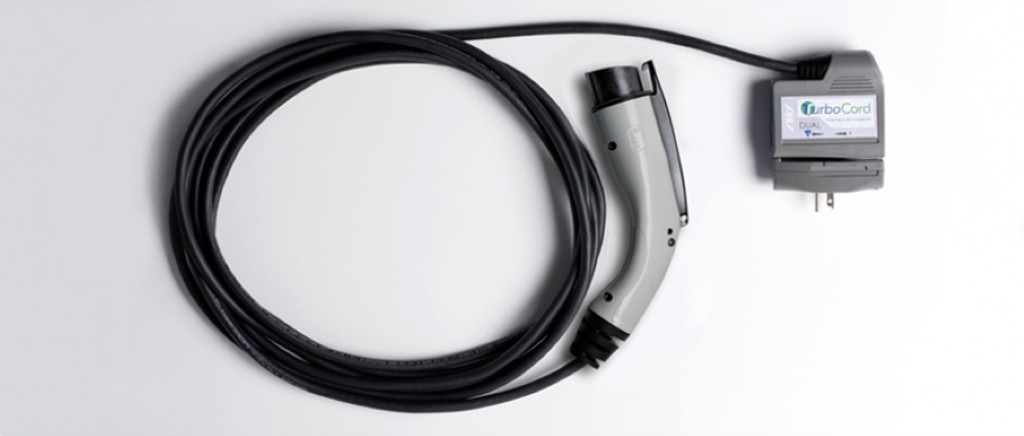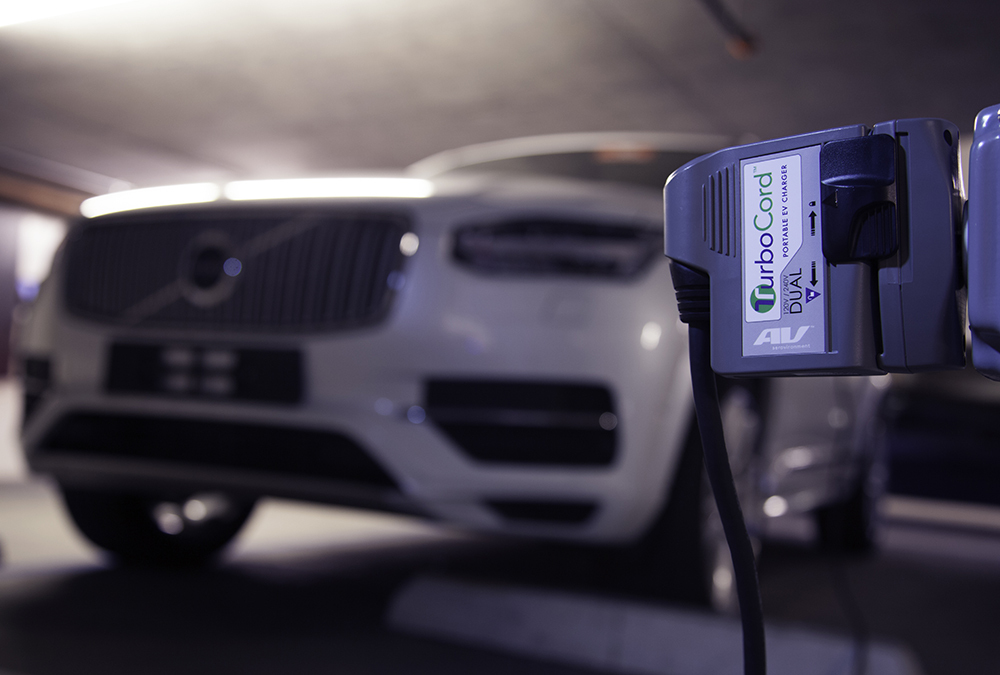When the first few thousand electric cars went on sale in California in the mid- to late 1990s, they used various different charging methods, each with its own dedicated charging stations.
Given the high cost of installing different infrastructure for different makes of car, that proved a not-inconsiderable impediment.
When electric cars returned to the market in 2011, that mistake was largely avoided.
DON'T MISS: Chargeway: the best electric-car idea you've never heard of
All plug-in vehicles sold in the U.S. except Teslas now use the familiar round charging connector, known as J-1772.
Even Tesla provides an adaptor cable so standard public charging stations can be used with the special receptacle it fits to its cars (except in China).
Starting in 2011, every electric car came with a charging cord in the trunk to use North American 120-volt wall current to recharge the battery. That was known as Level 1 charging.

TurboCord Dual 120V and 240V adapter
Dedicated Level 2 charging stations, meanwhile, used 240-volt current—effectively the same setup and wiring as an electric stove or clothes drier.
In due course, third-party companies had the idea that a charging cord that could handle not just 120-volt wall current but also 240-volt power would give electric-car drivers faster charging and extra flexibility.
It might also save them from the expense of installing their own Level 2 charging station.
READ THIS: BMW, Mercedes to offer wireless-charging options for plug-in hybrids next year
Thus the Aerovironment TurboCord, and later other similar portable EV charging cords, were born. They consist of the standard charging cable, attached to a plastic box containing the electronics.
Instead of a wire with a plug coming out of that, they offer a pair of interchangeable plugs, often on cords known as "pigtails." One has the standard three-prong grounded 120-volt plug, while the other has a different plug that fits into a 240-volt wall socket.
That's where the problem comes in: more than one 240-volt wall socket exists in the U.S. In fact, there are a few.

2016 Volvo XC90 T8 with AeroVironment TurboCord Level 2 charging cord
We surveyed the carmakers that now provide charging cords that handle both voltages with their plug-in hybrids—specifically Audi, BMW, Nissan, and Volvo.
Among the four brands, they use three different 240-volt plugs, all of them standards created by the National Electrical Manufacturers Association, known as NEMA.
BMW and Volvo both announced they will offer the TurboCord as original equipment, with a NEMA 6-20 plug for 240-volt charging.
CHECK OUT: 2016 Volvo XC90 T8: First Plug-In Hybrid With 240-Volt Charging Cord
Audi's dual-voltage charging cord comes with a standard NEMA 6-50 pigtail, but the option of ordering a NEMA 14-50 pigtail at additional cost.
Finally, Nissan will offer the 2018 Leaf with a pigtail using a NEMA 14-50 plug.
With the exception of Nissan, the three other makes come from countries that use standard European 230-volt current—meaning a U.S. 120-volt connector is, if anything, a downgrade to their standard charging cord.

NEMA 6-50 plug

NEMA 6-50 socket

NEMA 6-50 plug in socket
Electricians will tell you that different plugs are used for different applications, depending on the power of the appliance to be connected and the maximum amperage of the dedicated circuit leading to it.
The problem of an electric-car driver arriving at a destination—often RV parks, marinas, or even friends' homes with 240-volt appliance outlets—to find the wrong NEMA outlet for 240-volt charging with their car's cord could prove vexing.
It's not, however, anything like as challenging as it was in the 1990s, when some EVs used inductive paddle charging and others used cords and plugs.
With a bit of preparation, in fact, it's an eminently solvable problem.
All that's needed is for other makers to follow Audi's lead and offer a choice of pigtails.
Problem solved.
_______________________________________













